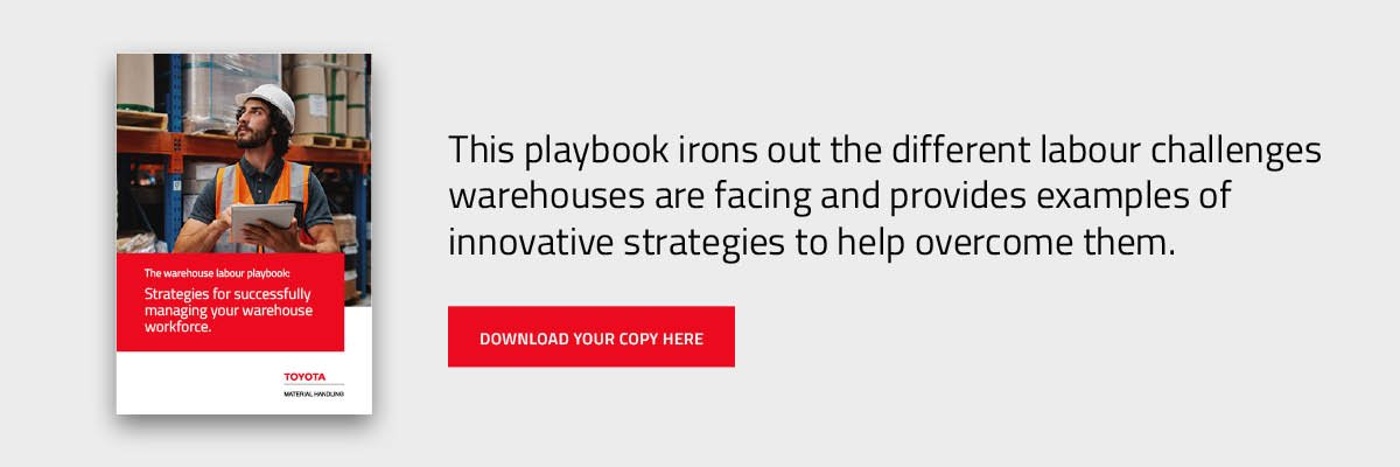A productive workforce is a key element of any successful warehouse operation. Research shows that the most productive employees are happy in their jobs, so what can your business do to manage your warehouse employees to ensure they enjoy their work and optimise efficiency in the workplace?
- Automate more of your processes.
- Implement adequate training opportunities for your staff.
- Prioritise the safety of your staff.
- Offer incentives and reward good performance.
- Measure critical areas of performance in your warehouse.
1. Automate more of your processes.
There are specific tasks in warehousing that are repetitive, time-consuming and prone to human error.
Some of these tasks include order picking and storing materials. Due to their nature, these tasks are not usually the most mentally stimulating and can lead to frustrations or staff feeling disengaged if they have to be completed too frequently.
However, you can automate many of these tasks by introducing solutions such as Automated Guided Vehicles (AGVs), robots and artificial intelligence, which are all equipped to take on much of the heavy lifting.
Not only is warehouse automation an effective way to speed up and streamline processes, but it also frees up more time for your employees to work on more rewarding, business-critical tasks.
In turn, this will make them feel more motivated in their role, which is one of the most impactful ways to improve productivity and take your warehouse operation to the next level.
2. Implement adequate training opportunities for your staff.
According to a recent report, 30% of workers in the UK say they have not received formal workplace training in the last five years.
Training staff is essential in every industry. However, it is imperative in warehouse settings, where staff use machinery and are at higher risk of injury.
Providing training opportunities will make your staff feel more assured and confident when taking on particular tasks. It also shows them you are invested in their development and want to see them grow in their role.
Ongoing training should always be part of the routine. This gives everyone the chance to brush up on existing skills, resolve uncertainties and prevent bad habits from setting in.
It will also reduce the number of injuries in your workplace, which is one of the main factors that can impact employee morale and productivity.
3. Prioritise the safety of your staff.
For businesses operating in warehouses and other distribution settings, avoiding downtime is vital for keeping staff productivity at the optimum level.
The direct correlation between warehouse injuries and the impact this can have on productivity, profitability and employee morale means businesses should always prioritise their staff's safety.
As well as protecting employees by investing in suitable and regular training, your business should also focus on the layout of your warehouse to make sure it is optimised for safety and efficiency.
By having the correct safety measures in place, staff will feel assured they work for a company focused on their employees' wellbeing and feel more confident when taking on their day-to-day duties.
4. Offer incentives and reward good performance.
Everyone likes to be rewarded for their hard work. It makes them feel valued and motivates them to continue putting in the effort to help a business meet its objectives.
Of course, this reward could be monetary, depending on the size of your budget and the level of success an individual has achieved.
But there are many more incentives employees would appreciate and make them more productive in their job roles. Some of these include extended holidays, increased flexi-time or even an employee of the month scheme.
Regardless of the size of the reward, these types of incentives show your workforce that you appreciate their effort and have a culture built on ‘giving back’ to those dedicated to your cause.
5. Measure critical areas of performance in your warehouse.
If you are not measuring the performance of your operation, how will you know whether your team is being productive and what needs to change if so?
Your business should regularly track certain KPIs to establish which areas of your operation perform better than others.
This will aid you in your decision-making and allow you to have more honest, productive conversations with your team to implement new ideas and ways of working should a particular department or area of the supply chain fall short.
All of the initiatives mentioned above are effective ways to better manage productivity in the workplace and ensure morale stays high at all times. However, they should not be implemented in isolation.
To learn more about some of the other common labour challenges warehouses are currently facing, alongside different ways to overcome them, download a copy of our insightful playbook.
It is full of innovative strategies designed to help you overcome the labour challenges you face. Click the link below to get access to your copy.

